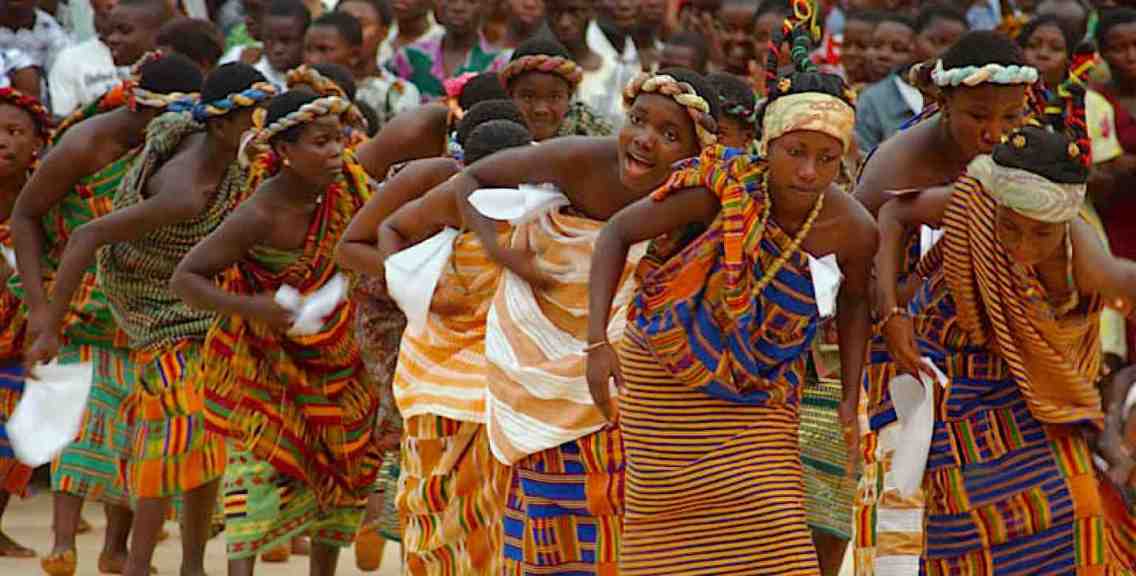
Ghana’s Rich Cultural Heritage: A Tapestry of Diversity
Ghana isn’t just a country—it’s a living, breathing celebration of culture. With over 100 ethnic groups, each with its own distinct identity, Ghana is a true cultural mosaic.Ghana is a land where tradition and modernity blend seamlessly, and its cultural richness is one of the nation’s most captivating features. At the heart of this cultural vibrancy lies the incredible diversity of its people. With more than 100 ethnic groups, Ghana's heritage is a colorful mosaic of languages, customs, festivals, music, and art — all shaped by generations of rich traditions. Ghana cultural heritage is a vibrant and diverse Tapestry, shaped by its numerous ethnic groups and not history. From the vibrant art and music to the delicious cuisine and historical landmarks, Ghana offers a unique and captivating experience.
The Akan: Royalty, Kente, and Resilience
Among the major ethnic groups, the Akan—including the well-known Ashanti and Fanti—stand out for their significant historical and cultural influence. The Ashanti, famed for their intricate Kente cloth, royal regalia, and powerful kingdom, continue to play a central role in Ghanaian identity. The Fanti, who are primarily coastal, bring their own maritime history, festivals, and social customs to the table.
The Akan people, especially the Ashanti and Fanti, have deeply influenced Ghanaian society. The Ashanti Kingdom is one of the most historically significant in West Africa, renowned for its gold regalia and symbolic Kente cloth—a globally recognized textile symbol of pride and identity.
> “Kente is not just a cloth; it’s a story woven into fabric.”
The Fanti, traditionally coastal dwellers, are known for their fishing heritage, vibrant Asafo companies (traditional warrior groups), and colorful festivals like Bakatue, which opens the fishing season in Elmina.
The Ewe: Rhythm, Storytelling, and Spirit
Found in the Volta Region, the Ewe people are master drummers and storytellers. Their dances and oral traditions form an essential part of Ghana’s cultural archive. The Hogbetsotso Festival, meaning "the festival of exodus," celebrates their migration and resilience, marked by symbolic rituals, drumming, and dance
Ga-Adangme: Celebrating Life and Resilience
The Ga-Adangme, found primarily around the capital, Accra, are known for their Homowo Festival, which celebrates triumph over famine. Their language, architecture, and seafood-based cuisine reflect a long-standing coastal lifestyle infused with spiritual and communal values.
The Guan: Ghana’s Earliest Settlers
In the north, the Mole-Dagbon people—including the Dagomba and Mamprusi—bring a distinct cultural flavor with their ancient chieftaincy systems, traditional music (like the talking drum), and Islamic influences.
Another important yet often less spotlighted group is the Guan, believed to be some of the earliest settlers in Ghana. Their presence can be felt across different regions, blending with other cultures while maintaining unique linguistic and traditional elements.
Conclusion: Unity in Diversity
From bustling city streets to remote villages, Ghana’s cultural identity thrives through the harmony of its many ethnic groups. Music, dance, language, festivals, and customs all come together to form a cultural legacy that is as resilient as it is beautiful.
Together, these ethnic groups and many smaller communities create the beautiful cultural fabric that defines Ghana. From lively street markets echoing with a medley of languages, to traditional ceremonies pulsing with rhythm and color, Ghana's heritage is alive and thriving — a proud testament to unity in diversity.
Experience Ghana—and walk through history, culture, and living tradition.
---
Want to see more stories about Ghanaian culture and travel? Subscribe to the blog and follow us on [social media handles]!




